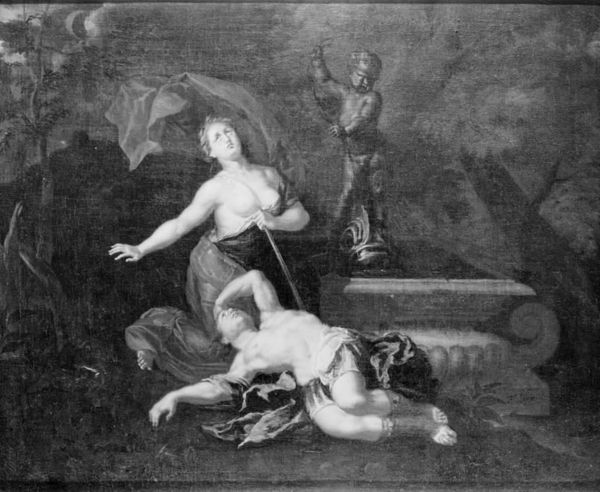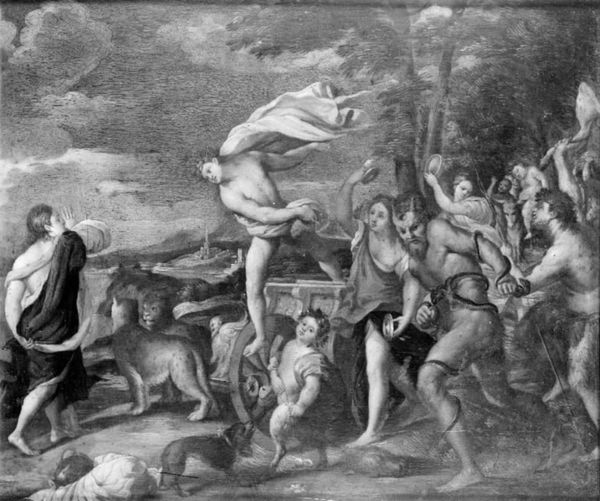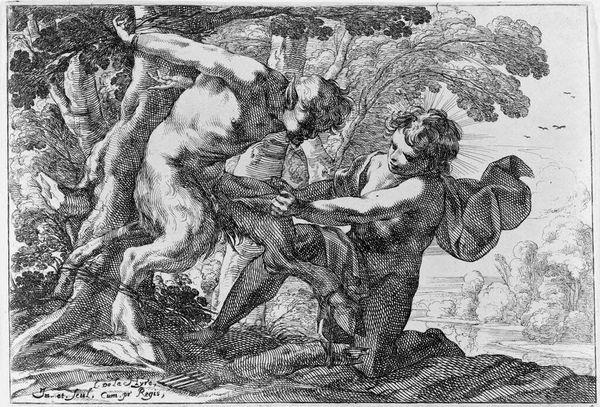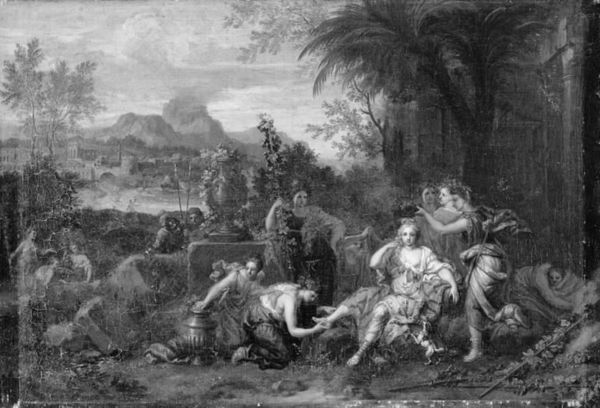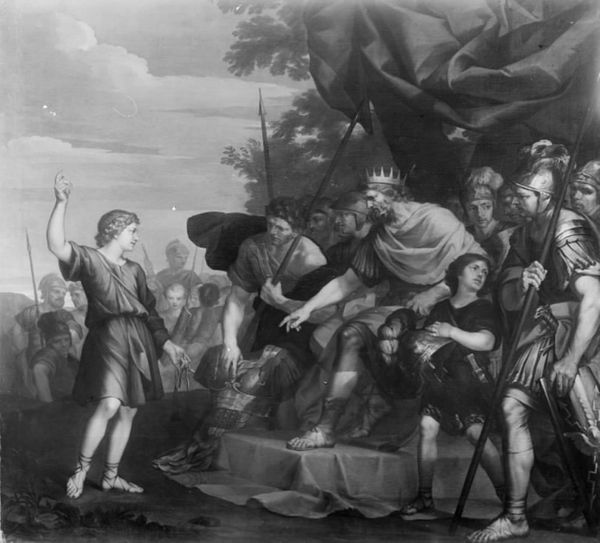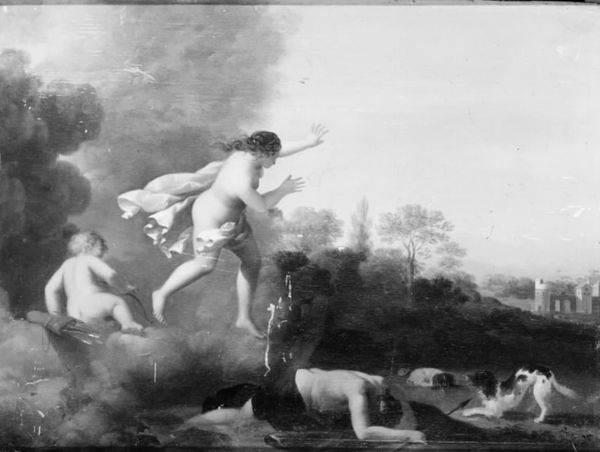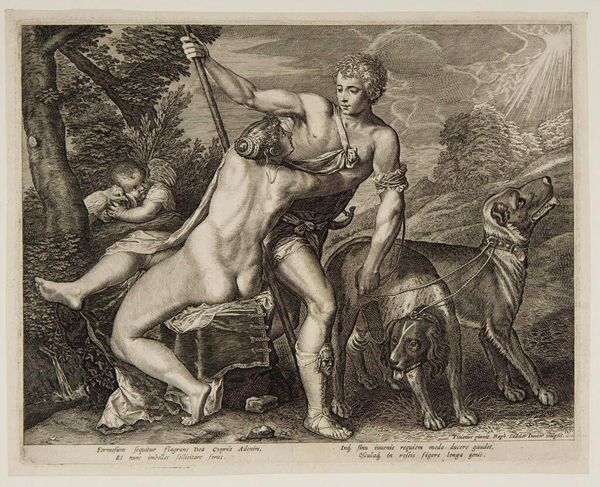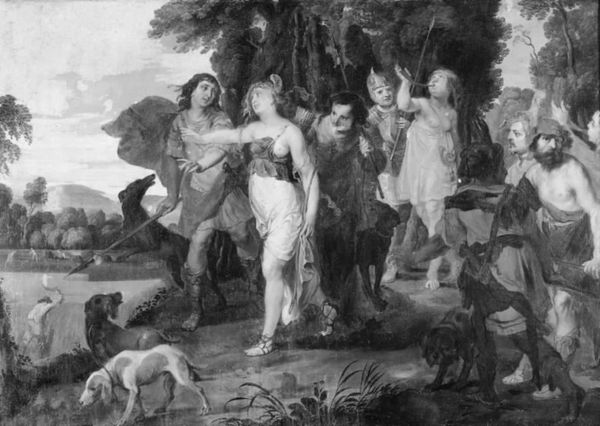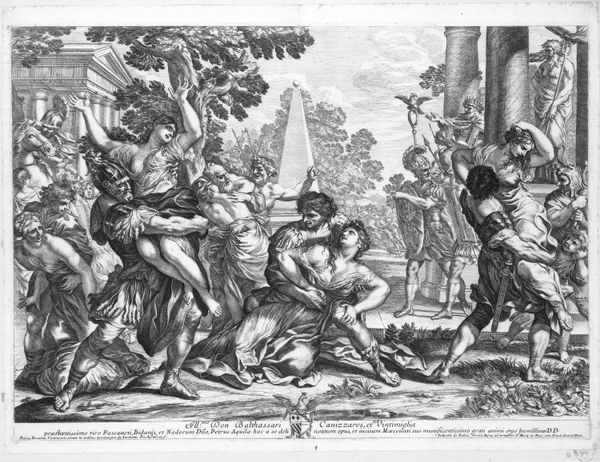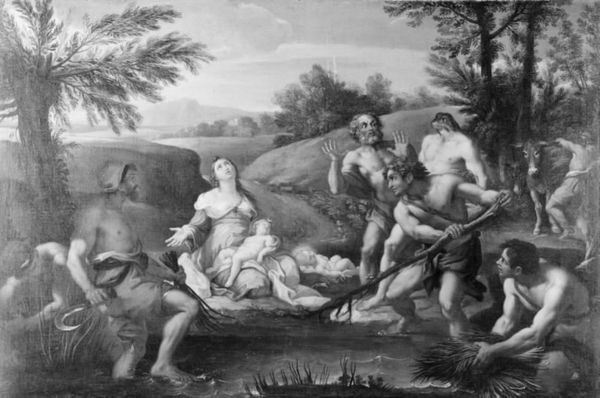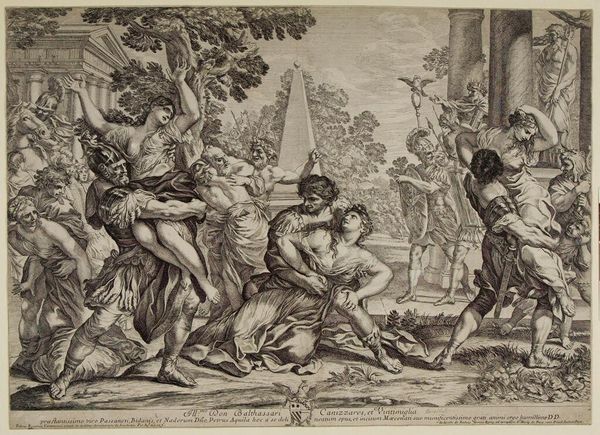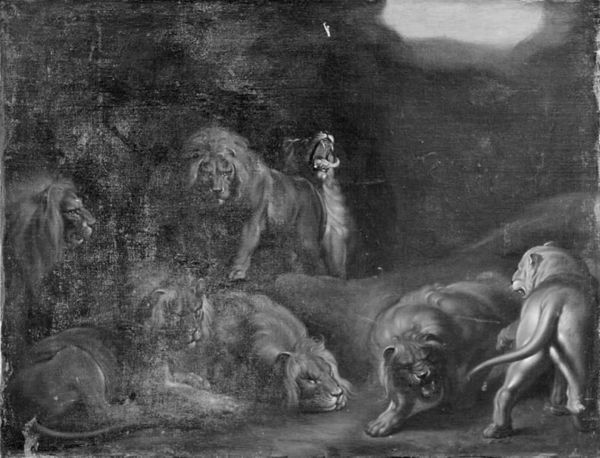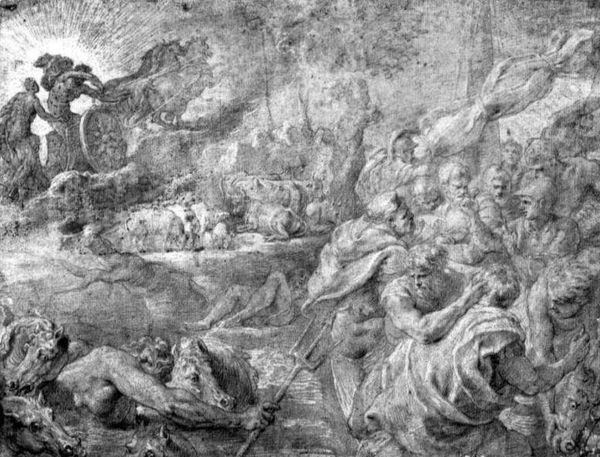
painting, oil-paint, canvas
#
baroque
#
painting
#
oil-paint
#
landscape
#
figuration
#
canvas
#
black and white
#
monochrome photography
#
history-painting
#
monochrome
#
monochrome
Dimensions: 49 cm (height) x 59 cm (width) (Netto)
Francesco Liberti painted this canvas of Narcissus, likely in the latter half of the 17th century. The tale, drawn from Ovid’s Metamorphoses, shows the tragic hunter, Narcissus, captivated by his own reflection. See how Liberti presents Narcissus reaching towards his mirrored image in the water, a gesture laden with profound implications. This act of reaching mirrors the timeless motif of the Fall, an act of grasping for something just out of reach, something forbidden, like Eve’s apple, or even, the fruit of the Tree of Knowledge. The consequences are clear: Narcissus is doomed to waste away, consumed by a desire that cannot be fulfilled. Consider the recurring motif of the mirror throughout history – from ancient myths to Renaissance paintings – as a symbol of vanity, self-knowledge, or even illusion. It is a mirror that reflects not only the surface but also the hidden depths of the psyche, our deepest longings and fears. In this image, we are confronted with the eternal paradox of human desire, a reminder of the dangers of unbridled self-obsession, eternally caught in the reflection of our own desires.
Comments
No comments
Be the first to comment and join the conversation on the ultimate creative platform.

